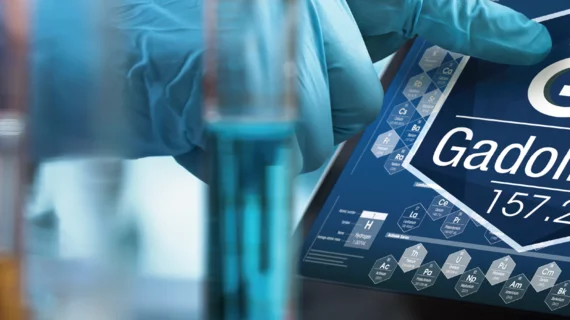ACR committee proposes new term for symptoms associated with gadolinium exposure
The American College of Radiology has proposed a new term to describe symptoms related to gadolinium exposure, the advocate announced Tuesday.
The ACR’s Committee on Drugs and Contrast Media suggests using the acronym “SAGE,” or symptoms associated with gadolinium exposure.
This new term, the college explained, can help providers describe symptoms without prematurely attributing them to a disease. The move will also better standardize reporting, experts wrote in Radiology.
Furthermore, the committee recommends using SAGE in lieu of terms like gadolinium storage disease, gadolinium storage condition and gadolinium deposition disease.
“Such a term provides the opportunity for further refinement should future evidence surface that compels the FDA, American College of Radiology, and other entities to re-evaluate the potential causal association between long-term gadolinium retention and symptoms,” Robert J. McDonald, MD, PhD, with Mayo Clinic’s Department of Radiology, and co-authors added.
The FDA approved the use of gadolinium-based contrast agents (GBCAs) during MRI scans in 1988, and they have long been considered a safe and beneficial enhancement for many exams. In general, hypersensitivity reactions and physiologic reactions to GBCAs are minimal (approximately 1 in every 1,000 administrations) and mild.
Patients who are most at risk of side effects are those with severe kidney disease, as they have an increased risk of retaining a small fraction of GBCAs in a dose-dependent manner for weeks or months. However, current GBCA doses are well below levels that would be considered toxic to humans.
“Even if dozens of cumulative doses are administered—and even if all retained gadolinium was in the most toxic, free, elemental form—the amount of retained gadolinium would still be several orders of magnitude below well-established toxicity thresholds,” McDonald et al. added.
Though widely considered safe, the retention of gadolinium in central nervous system tissues prompted the FDA to require GBCA manufacturers—Bayer Healthcare, Bracco Diagnostics, GE Healthcare and Guerbet—to undergo clinical trials to confirm the long-term welfare of patients who receive GBCAs.
You can read the full article on RSNA’s website.
Related MRI Contrast Agent Safety Content:
A deep dive into gadolinium-based adverse reactions
Allergic reactions to iodinated CT contrast increase likelihood of sensitivity to GBCAs
Researchers detail data on gadolinium-related adverse reactions
Radiologists must take a data-driven approach to discuss gadolinium, mitigate liability risk
Radiologists see potential to reduce GBCA administration with new synthetic MRI technique
Gadolinium-based contrast agents are safe, even at higher doses, new research suggests
Gadolinium debate rages on, with radiologist questioning recent GBCA liability guidance
ACR committee proposes new term for symptoms associated with gadolinium exposure
Closing the knowledge gap on gadolinium retention risks
Radiologists find direct evidence linking gadolinium-based contrast agent to higher retention rates
AI software that eliminates need for gadolinium contrast during imaging exams wins patent
Research may offer new method to detect GBCA on MRI
Radiology, other multispecialty groups urge caution with GBCAs during interventional pain procedures
Cardiac MRI contrast agents are low-risk and safe for ‘overwhelming’ majority of patients
Health orgs publish special report about gadolinium retention, GBCA use in imaging
Rodent brains retain gadolinium after repeated administration of GBCA a year after injection
Advanced MRI mapping spots traces of gadolinium in the brain invisible during conventional scanning
Radiologists should keep patients’ best interests in mind to mitigate gadolinium liability risk

